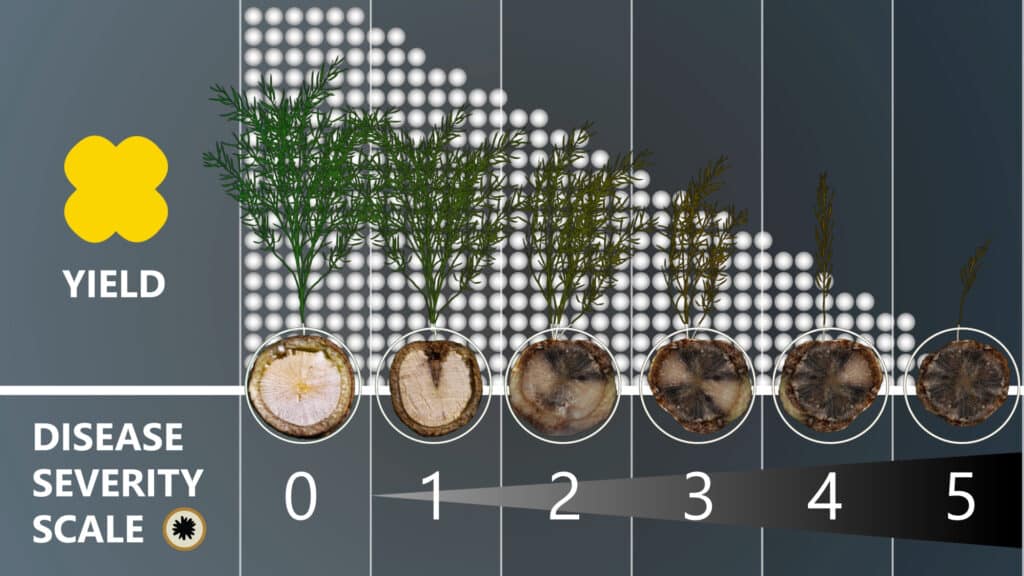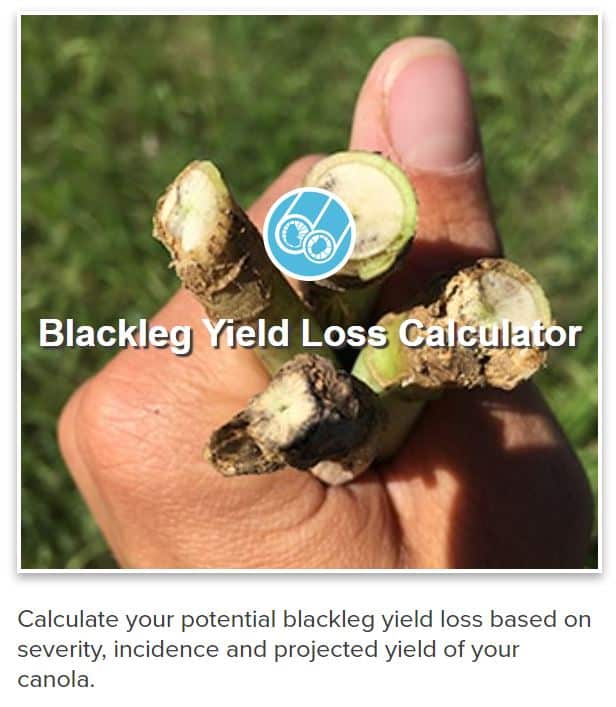Key Result
This project was able to develop the first yield loss model for blackleg of canola for Western Canada.
Project Summary
The objectives of this study are to:
- develop a yield loss model to relate the severity of blackleg on canola with the corresponding yield losses.
- evaluate representative populations of L. maculans from Western Canada for the occurrence of fungicide resistance.
Overview:
By studying relationships between blackleg disease severity and yield loss and the fungicide sensitivity of Leptosphaeria maculans populations from Western Canada, this project was able to develop the first yield loss model for blackleg of canola for Western Canada. This model can provide a foundation for understanding the yield impact associated with certain levels of blackleg, not only on a field scale, but also on local or even regional scales.
Producers can now estimate the amount of yield loss from blackleg in their canola fields. To use the blackleg yield loss model, producers need to complete a pre-harvest survey of 50-100 plants that well present the field. Clip these plants near the base of the root tissue to determine the incidence and severity of blackleg infection. Severity of blackleg is rated on a 0-5 scale, with 0 being a healthy clean plant to 5 showing internal blackening across the entire cross-section of the stem. For every unit of increase in blackleg severity (from a 1 rating to a 2 rating, for example), roughly 20 per cent yield loss can be expected per plant. Take the field yield average, the average blackleg severity and the percentage of plants infected (incidence) to determine the amount of yield lost.
Note: This study was one of many making up the ‘Canola Disease Management Tools for the Prairies – Blackleg and Sclerotinia’ project that was led by SaskCanola in partnership with industry and funded under the Agri-Science Project (ASP) within the Growing Forward 2 Program.
The outcomes from this project were utilized in the development of the Blackleg yield loss calculator.







